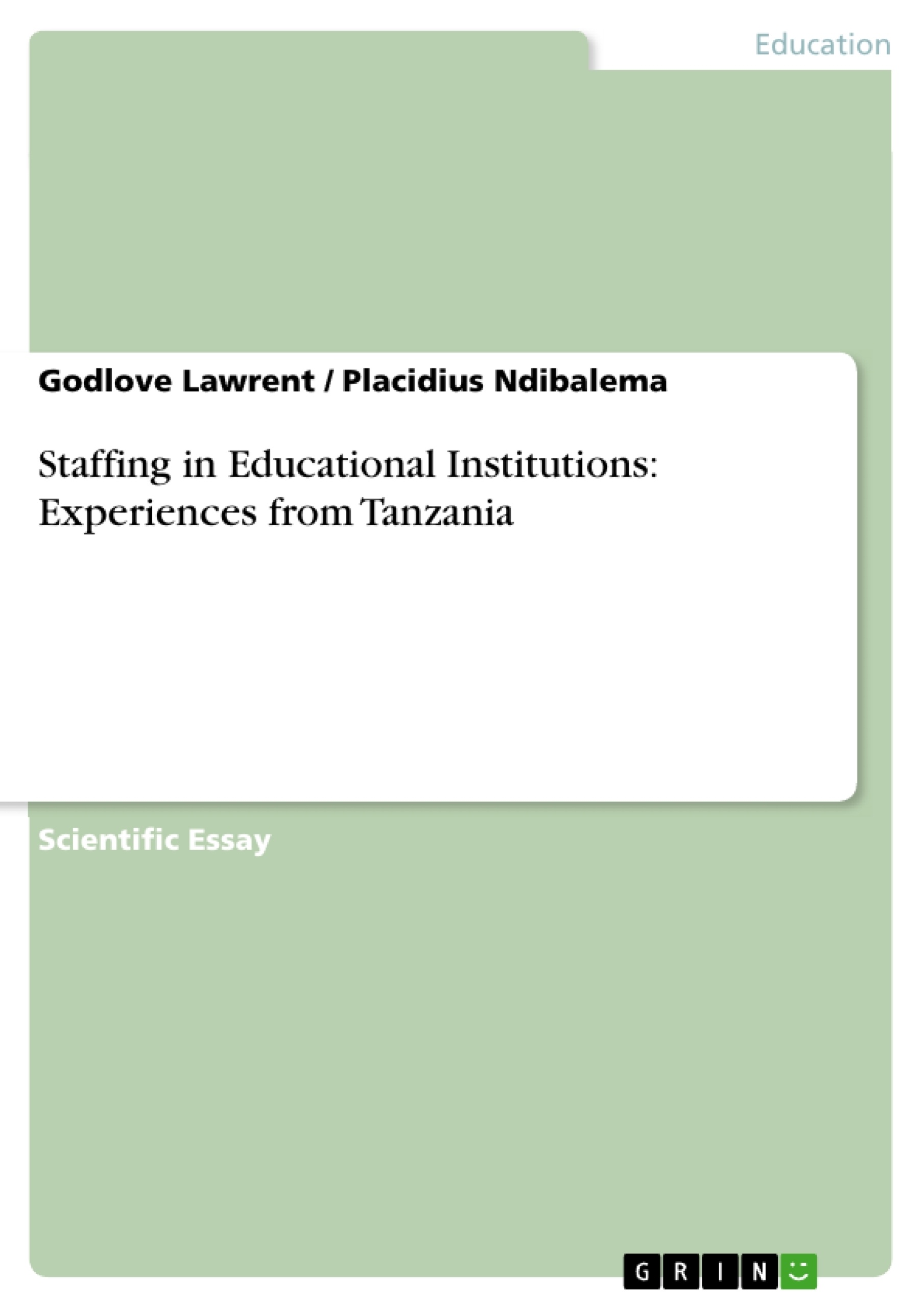This paper presents various issues regarding staffing. In an introductory part, the paper describes the origin of staffing by tracing back to the administrative management theory. Such staffing issues as conceptualization of staffing with regard to different scholars. The features of staffing, the importance of staffing and the implication in educational institutions, challenges facing staffing and the strategies to address these challenges are also clearly explained in this paper. In the last part, the paper concludes that, staffing is inevitable because of the dynamism of the organizations and the educational institutions in particular.
Table of Contents
- Introduction
- Conceptualization of Staffing
- Features of Staffing
- Staffing Processes
Objectives and Key Themes
This paper explores the multifaceted issue of staffing in educational institutions, drawing on experiences from Tanzania. It examines the origins and conceptualizations of staffing, highlighting its key features and importance in educational settings. The paper also delves into the challenges faced in staffing and presents strategies to address them.
- The importance of staffing in educational institutions
- The conceptualization of staffing and its various definitions
- The challenges faced in staffing educational institutions
- Strategies to address staffing challenges
- The dynamics of staffing in relation to organizational change
Chapter Summaries
The introductory chapter lays the groundwork by outlining the administrative theory underpinning the discussion on staffing. It draws on the contributions of key theorists like Henri Fayol and Luther Gulick to establish staffing as a crucial managerial function. The chapter concludes by emphasizing the importance of staffing in ensuring the smooth functioning of educational institutions.
The chapter on the conceptualization of staffing provides a comprehensive overview of different perspectives on this managerial function. It examines the definitions put forth by prominent scholars such as Koontz and O'Donnell, Green, and Okumbe, highlighting the core elements and processes involved in staffing. These definitions encompass aspects like identifying work requirements, determining staffing needs, recruitment, selection, development, and performance appraisal.
The chapter on the features of staffing delves into the universal nature of this activity, emphasizing its importance across different types of institutions and organizations. It further explores the dynamic nature of staffing, highlighting how it adapts to changes in organizational size, environment, and evolving needs. The chapter also highlights the continuous nature of staffing, emphasizing the ongoing process of recruitment, development, and retention of personnel throughout an organization's lifecycle.
The final chapter on staffing processes examines the key steps involved in this managerial function. It explores the various activities involved in procuring, developing, compensating, integrating, and maintaining personnel. This chapter also delves into the assessment of manpower requirements, including the importance of forecasting and identifying future needs. It emphasizes the crucial role of projection in ensuring a smooth staffing process and effectively addressing future staffing needs.
Keywords
This paper focuses on staffing within the context of educational institutions, exploring key concepts and issues related to recruitment, selection, development, and performance appraisal. It examines the challenges and strategies associated with staffing in the Tanzanian educational context. The paper highlights the critical role of human resource management in ensuring effective organizational functioning and achieving educational goals.
- Quote paper
- Godlove Lawrent (Author), Placidius Ndibalema (Author), 2012, Staffing in Educational Institutions: Experiences from Tanzania, Munich, GRIN Verlag, https://www.grin.com/document/195295



